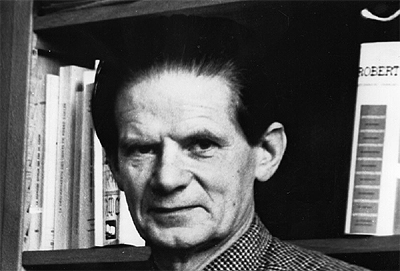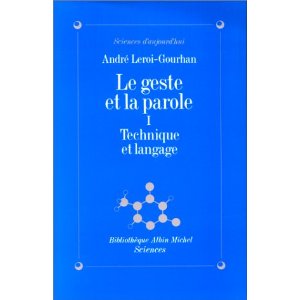
28/02/2013, by CLAS
Language and technology – a new research project
For the CLAS blog’s inaugural post, Professor Christopher Johnson tells us about his new research project, funded by the Leverhulme Trust.
I have recently been awarded a Leverhulme Major Research Fellowship to write a book on the French prehistorian and ethnologist André Leroi-Gourhan (1911-86). Unlike the anthropologist Claude Lévi-Strauss, my previous subject of research, Leroi-Gourhan is not very well known in the English-speaking world. The translation of his published work has been rather uneven, focusing mainly on his studies of prehistoric cave art, and more recently, his work on evolution and technology. My own specialization in French language, culture and intellectual history gives me access to the entirety of his published work and will allow me to undertake a comprehensive and contextualized study of his contribution to twentieth-century thought. What attracted me to Leroi-Gourhan’s work was the unusual range of his interests and the somewhat atypical trajectory he followed through the sciences humaines in pre- and post-war France. Over a period of approximately fifty years, he worked in areas as diverse as animal geography, linguistics, art history, archaeology, palaeontology, comparative anatomy and technology. Diversity, however, is not dispersal: a leitmotif of Leroi-Gourhan’s work, through the perspectives of these different disciplines, is his search for a wider and deeper understanding of the nature of human existence.
The starting point for my project will be Leroi-Gourhan’s early career, which began in the 1930s. The qualities I most admire in Leroi-Gourhan as a thinker, his intellectual eclecticism but also his down-to-earth approach to the facts of material culture, are already apparent in this early period. What I find particularly fascinating as a modern linguist is the fact that Leroi-Gourhan’s initial training was neither in ethnology nor prehistory, but in languages. His first degrees were in Russian and Chinese, which were not at the time mainstream choices for language study. On a practical level, these languages were to be directly applicable to his early research on Chinese art history and the archaeology of Northern Europe and Asia, but equally important in my view is his attitude towards the practice of language learning, his insistence that if we really want to understand the alternative universes of meaning and value found in other cultures, we need quite literally to get inside their languages. He himself went on to learn Japanese during a two-year research mission to Japan in 1937-9, where his attitude towards language was replicated in his approach to material culture. Traditional ethnography, he argued, tended to provide only superficial observations and descriptions of the material cultures of other societies, and did not pay sufficient attention to technological factors. In response, his own practice as an ethnologist was to make a systematic attempt to learn how everyday things are made, how they function and how they are used. Rather than taking language and technology as separate aspects of Leroi-Gourhan’s early intellectual development, I see these two domains as being intimately linked, anticipating his later and more widely-known theoretical work on gesture and speech. I am looking forward to exploring and developing these themes in a research paper I will be giving in March, entitled ‘Leroi-Gourhan in Japan’.
Christopher Johnson, Professor of French
Photo: André Leroi-Gourhan at the Collège de France. © Archives de la maison René Ginouvès, Archéologie et Ethnologie. Fonds André Leroi-Gourhan.


Congrats on your first blog! (I assume it’s your first!) As I always say, and I think you and Leroi-Gourhan might agree with me, language does not exist, it happens, and it happens in a social, cultural and technological context. Looking forward to the book!